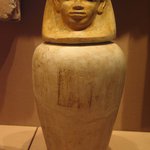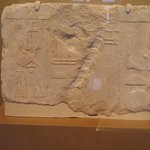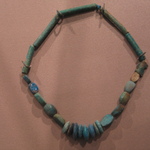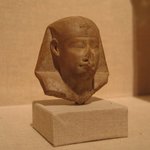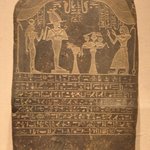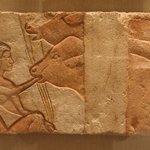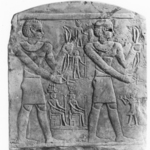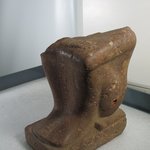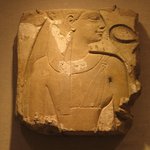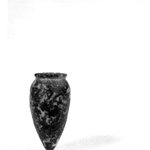
Head of a Kushite Ruler
Egyptian, Classical, Ancient Near Eastern Art
On View: 19th Dynasty to Roman Period, Martha A. and Robert S. Rubin Gallery, 3rd Floor
Art historians assign this head to the very end of the Twenty-fifth Dynasty. It may represent the ultimate Kushite king, Tanwetamani (circa 664–653 B.C.), who was defeated by the Assyrian army that invaded Egypt and sacked the capital city of Thebes. After Tanwetamani's defeat, descendants of the Kushite royal house continued to rule Nubia from the area around Napata until the first quarter of the third century B.C.
MEDIUM
Diorite
DATES
ca. 670–653 B.C.E.
DYNASTY
late Dynasty 25
PERIOD
Third Intermediate Period
DIMENSIONS
3 3/8 x 2 3/4 x 5 5/8 in. (8.6 x 7 x 14.3 cm) (show scale)



COLLECTIONS
Egyptian, Classical, Ancient Near Eastern Art
ACCESSION NUMBER
05.316
CREDIT LINE
Charles Edwin Wilbour Fund
PROVENANCE
Archaeological provenance not yet documented; by 1905, acquired by Maurice Nahman of Cairo, Egypt; 1905, purchased in Cairo from Maurice Nahman by W. M. Flinders Petrie for the Brooklyn Museum.
Provenance FAQ
CATALOGUE DESCRIPTION
Fragmentary head of a Kushite king in green basalt (?). Beard almost entirely gone. Left chin and cheek badly chipped, as is nose. The fragment is of exceptional quality and in spite of the very hard stone, the face is modelled with extraordinary detail.
Condition: Head preserved from just above the eyes down to base of neck.
EXHIBITIONS
MUSEUM LOCATION
This item is on view on the 19th Dynasty to Roman Period, Martha A. and Robert S. Rubin Gallery, 3rd Floor
CAPTION
Egyptian. Head of a Kushite Ruler, ca. 670–653 B.C.E. Diorite, 3 3/8 x 2 3/4 x 5 5/8 in. (8.6 x 7 x 14.3 cm). Brooklyn Museum, Charles Edwin Wilbour Fund, 05.316. Creative Commons-BY (Photo: , CUR.05.316_NegA_print_bw.jpg)
IMAGE
side, CUR.05.316_NegA_print_bw.jpg., 2016
"CUR" at the beginning of an image file name means that the image was created by a curatorial staff member. These study images may be digital point-and-shoot photographs, when we don\'t yet have high-quality studio photography, or they may be scans of older negatives, slides, or photographic prints, providing historical documentation of the object.
RIGHTS STATEMENT
Creative Commons-BY
You may download and use Brooklyn Museum images of this three-dimensional work in accordance with a Creative Commons license. Fair use, as understood under the United States Copyright Act, may also apply.
Please include caption information from this page and credit the Brooklyn Museum. If you need a high resolution file, please fill out our online application form (charges apply).
For further information about copyright, we recommend resources at the United States Library of Congress, Cornell University, Copyright and Cultural Institutions: Guidelines for U.S. Libraries, Archives, and Museums, and Copyright Watch.
For more information about the Museum's rights project, including how rights types are assigned, please see our blog posts on copyright.
If you have any information regarding this work and rights to it, please contact copyright@brooklynmuseum.org.
RECORD COMPLETENESS
Not every record you will find here is complete. More information is available for some works than for others, and some entries have been updated more recently. Records are frequently reviewed and revised, and we welcome any additional information you might have.






